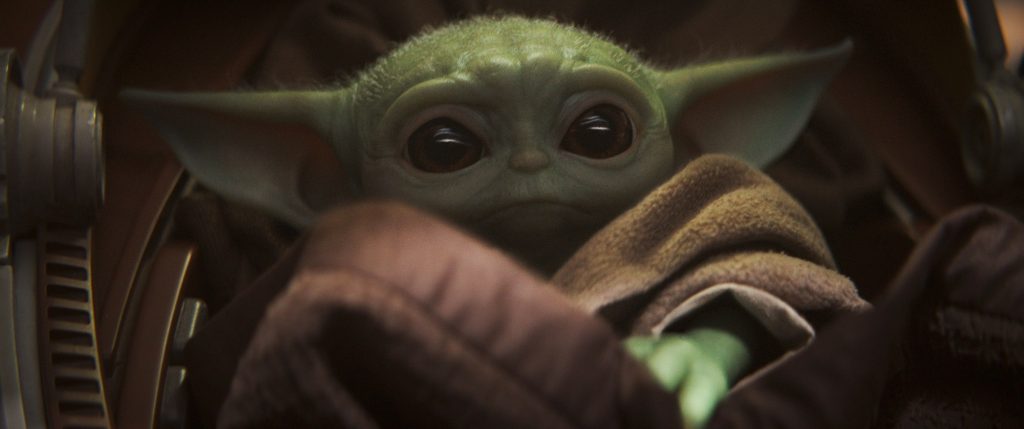Rise of baby characters in entertainment is lazy marketing
3 min read
"Baby Yoda, among other baby mascots, has taken over current entertainment media." (Disney+)
By JUSTIN REICHARD
Staff Writer
Ok, let me explain myself before you get mad at me. Baby Yoda is cute and the memes are great, what I have a problem with is the concept of him in general. The baby mascot trend is a cheap and lazy way for companies to recreate their brand and cash in on the pre-existing success of other brands’ marketing tactics, instead of finding new and creative ways to engage consumers.
Recently, Planters killed Mr. Peanut in a pre-Super Bowl spot commercial. Cut to the second quarter of the Super Bowl and it’s Mr. Peanut’s funeral. Other famous mascots attend. As they bury Mr. Peanut, Kool-Aid Man cries on his grave and then we have Baby Nut.
The idea of using an ad to kill off a company’s 104-year-old mascot is a daring marketing move–and one that left me really confused. I remember seeing everyone talking about it on Twitter and wondering what they were gonna do, did they have a new mascot that they were going to introduce now? Everyone was waiting on the Super Bowl to see the commercial only to reveal Mr. Peanut… as a baby.
Baby mascots are trending. I’m not sure if this was done directly because of Baby Yoda, or if they had it in the works since before The Mandalorian premiered. It’s no secret that Disney is a company that is known for heavily merchandising their properties. The new Star Wars franchise show, the Mandalorian, debuted on the new streaming channel Disney+.
The highly anticipated series was released on Nov. 12, just before the holidays. Starring was adorable, merchandisable Baby Yoda–a blatant cash grab, to me. I am not here to discuss whether the show is good or bad, but the creation of this character seems solely bent on making Disney even more money. There is also Guardians of the Galaxy’s Baby Groot, another Disney property in which they just turned a full-sized character into a baby.
In popular culture, baby culture has formed. There are artists DaBaby and Lil Baby. Beyond their names, the two came together to make the track, “Baby,” which was critically reviled for its vapid, baby-centric lyrics and its transparent cash-grab status. Even further exemplifying the baby trend is the popular Snapchat filter, which turns the user into a baby.
My problem with these baby mascots, and “baby culture” in general, is that it is lazy, as well as insulting to its audience. Taking something that everyone already knows, shrinking it down and making it cute and expecting consumers and viewers to just eat it up is degrading. It reads that companies don’t think that they have to try very hard to get consumers interested in their products. Just make it cute, and it will sell.
I could be wrong and hope that I am, but I can see making cute and cuddly baby mascots as a new way for companies to try and stay in the cultural zeitgeist and stay relevant online in the near future.
I just hope that we will see more creative mascots and characters in the media. There is so much that can be done to engage the viewer, and across so many different platforms. Take Geico, for example, that has had several successful advertising campaigns, including the caveman, little piggy and the Geico Gecko. These are all creative, memorable, and, most importantly, not rehashes of pre-existing material. I don’t want to feel insulted when I turn on the TV and see focus-tested adorable mascots running around trying to get me to buy something that I don’t need.
You can call me cynical. If this is the way that companies move forward, then I hope they at least get somewhat creative with it. I want to see the Trix Rabbit as a cute baby, then he could have a little Trix, as a treat.


